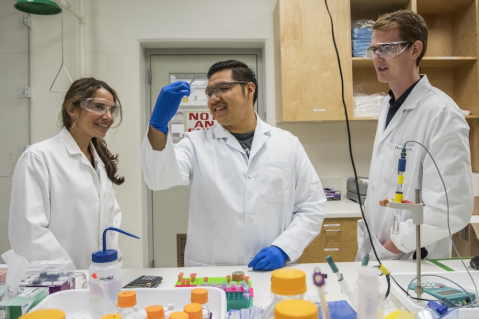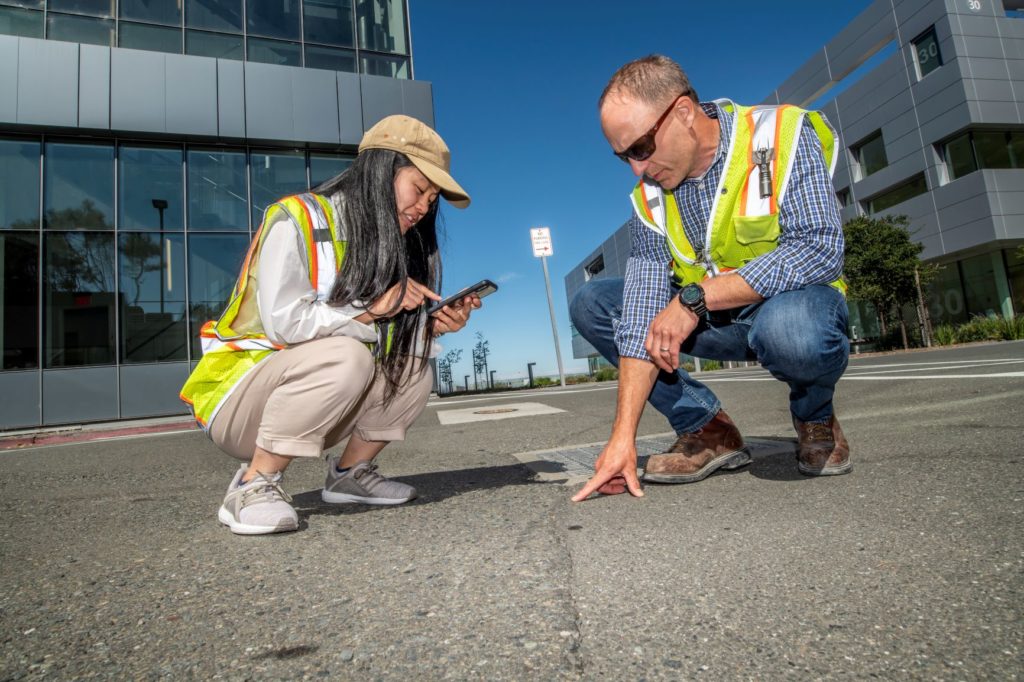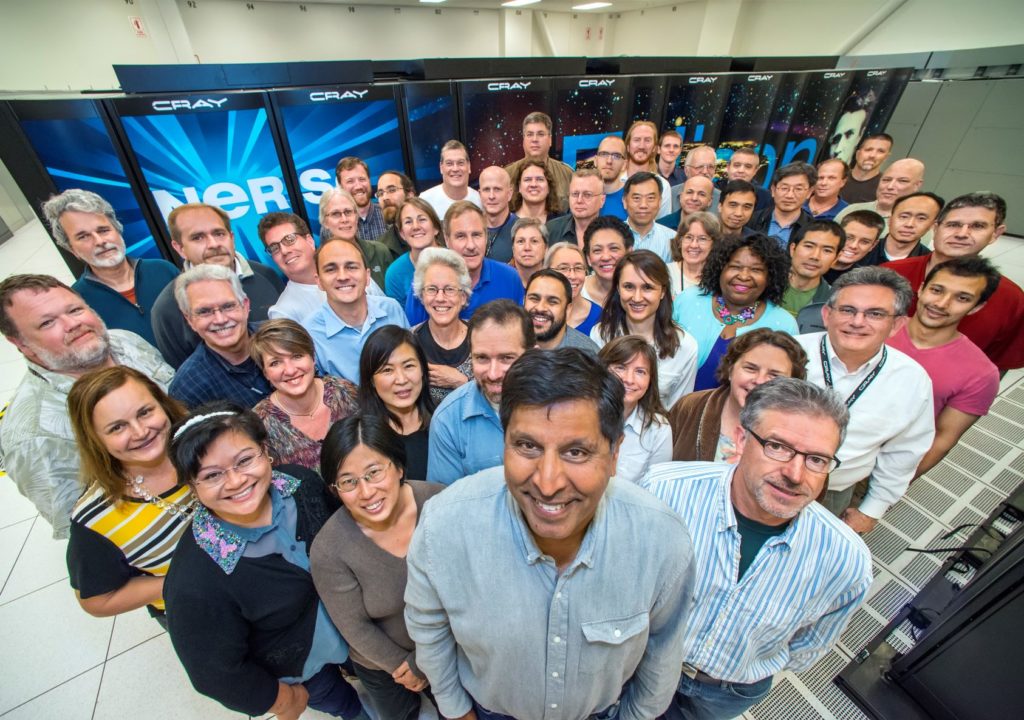- IDEA enables Berkeley Lab to accomplish our vision of “bringing science solutions to the world.” As the “Home of Team Science,” IDEA lives at the heart of true collaboration and teamwork.
- IDEA allows us to:
- Unlock innovation and new discoveries
- Harness the power of our collective contributions
- Unlock our teams’ fullest potential
- Produce operational excellence and high-performing teams
- IDEA is not separate to our work; instead, it is integral to who we are and what we do. Our goal is to have IDEA become second nature for each person at Berkeley Lab. We want it to become part of our culture’s DNA.
2. Why is “I” now in the first position?
“I” is not only positioned to lead our “IDEA” acronym, but it also signals that “we lead with inclusion.” IDEA also begins with “I” to express the importance of this effort at the individual and personal level of engagement and commitment.
3. Isn’t everyone included at the Lab?
Berkeley Lab’s preliminary data shows that 22% of our survey respondents (n = 447) believed that they had personally experienced exclusionary, intimidating, offensive and/or hostile conduct. The data tells us that not everyone feels included at the Lab, and we hope that the IDEA efforts lead to a culture of welcoming, belonging, and respectful treatment for all of our colleagues.
4. Why has the “A” been added to the acronym? Is accountability only for leadership? 
The “A” for “accountability” is now included in the acronym to promote responsibility in developing, implementing, and tracking our IDEA goals and progress for the Lab (see our Accountability Model). However, accountability is not only for management, but for all team members at the Lab. IDEA aims to promote personal investment among each of our colleagues to help make the Lab more inclusive, diverse, and equitable in our day-to-day roles. Similar to safety, we all have a role to play in IDEA. We want IDEA to become like second-nature for each person at the Lab, and a part of our culture’s DNA.
5. Why is the DEI Office no longer under Human Resources?
In an effort to emphasize the “A” for “accountability,” Berkeley Lab has taken the position that our IDEA efforts should have increased visibility, attention, and responsibility, and be seen as a Labwide focus, and not solely an HR focus. To learn more about the Diversity, Equitiy, and Inclusion (DEI) Office, please see the description below.
6. Who is overseeing IDEA?
- Laboratory Director: At the helm is Laboratory Director Mike Witherell. He serves as the Executive Champion to influence, endorse, promote, and ensure accountability for Labwide strategy and outcomes.
- DEI Senior Leadership Council: Director Witherell appointed 17 members to the DEI Senior Leadership Council. The SLC is responsible for developing the Lab’s overall integrated IDEA strategy; defining initiatives and priorities; and
evaluating and providing guidance on implementation of IDEA action plan. - DEI Community of Practice: Area and Lab diversity groups have representatives on the DEI Chairs Council. Council members serve as change agents to implement initiatives and solutions at the local level, monitor impact and effectiveness, and serve as a liaison for their communities.
- Diversity, Equity & Inclusion Office: This accountability structure is supported by the DEI Office in the Laboratory Directorate. This group ensures coordination with Human Resources and other Lab partners to operationalize IDEA at the process and institutional level, and ensure an integrated approach for our IDEA pillars. The Chief DEI Officer reports directly to the Laboratory Director, giving additional visibility and responsibility for IDEA at the Lab.
7. Why does it take so many groups to implement IDEA? 
As seen in our Accountability Model and our list of Employee Resource Groups, Task Forces, and Area/Division DEI Committees, we have a number of ways in which our ~4,000 employees can contribute to creating a more inclusive, diverse, and equitable workplace. IDEA cannot move forward without having all hands on deck: from individual contributors, to supervisors, managers, and senior leaders. We all have a role to play, and must work together to advance the culture and improvements that we want to see at the Lab and across 30+ Divisions for science and operations.
8. How is IDEA structured?
- Berkeley Lab’s IDEA Strategic Framework for inclusion, diversity, equity, and accountability cascades from our Laboratory vision: Bringing Science Solutions to the World. IDEA is a key enabler to accomplishing our Lab’s vision, and a critical component of our stewardship efforts. IDEAs unlock innovation, produce high-performing teams, and drive meaningful impact and outcomes—all of which are evidence-based and rooted in research around team effectiveness. This is important for Berkeley Lab as the “Home of Team Science.”
- The Lab’s diversity strategy refers to the ways in which the organizational culture supports, celebrates, and encourages a variety of experiences, values, worldviews, and approaches.
- Our inclusion strategy refers to efforts around building a welcoming environment, where staff feel respected, supported, and valued to fully participate.
- Our equity strategy ensures that the Lab identifies goals toward removing barriers to fair treatment, access, opportunity, and advancement.
- Finally, the Lab’s accountability model promotes responsibility to manage and implement its IDEA goals, and promote personal investment for individuals to help make the Lab more inclusive, diverse, and equitable in their day-to-day roles.
- The IDEA strategy is made visible through all parts of Berkeley Lab:
- Workforce – employee experience and full talent lifecycle: attract, select, engage and retain
- Workplace – institutional policies, programs, environment
- Community – engagement with external partners/community
9. We’ve talked about diversity for the past few years. What is different now?
In developing the IDEA campaign, it is important for us to articulate the answers to the following questions. How can we:
- Create and deploy strategic initiatives, and not just activities? Berkeley Lab’s new IDEA Framework outlines our strategic cascade, starting with the Lab’s vision.
- Demonstrate visibility and accountability from our top leader? We are currently the only DOE national laboratory with a Chief DEI Officer reporting to the Lab Director.
- Engage our senior leaders to advance DEI and culture change? Our Accountability Model includes the Lab Director and senior leadership, which is new for the Lab.
- Engage the Lab community to advance DEI and culture change? Our Employee Resource Groups, Task Forces, and Area/Division DEI Committees include hundreds of Lab employees to help engage and promote our IDEA culture.
- Think about inclusion in a different way? With our environment of “Team Science” and collaboration, we will also launch an awareness effort around “team psychological safety” and how the five components of high-performing teams are essential to innovation and accomplishing our Lab’s vision.
- Support the work of managers to integrate DEI at the Lab? Berkeley Lab will provide some useful toolkits in our IDEAs in Action web page. The discussion of IDEA best practices will help us consider how to integrate and operationalize IDEA as part of our work processes and decision-making.
10. Will there be some way to check in with staff at the Area and Division level to see if the IDEA program is making an impact?
With the creation of the IDEA Community of Practice, we will meet on a quarterly basis to understand the employee experience of IDEA at the ground level. This is way for Berkeley Lab to have a line of sight into what each of the groups are experiencing, and continuing to improve our understanding for increased effectiveness and scalability.
11. Do we have an IDEA scorecard so we can measure progress?
Since the IDEA campaign is in its first year, Berkeley Lab is starting to identify key priorities and focus areas for FY 2020. We will continue to update our website with the latest information, including our measurements for tracking the progress of our strategy, goals, and milestones (more to come!)


